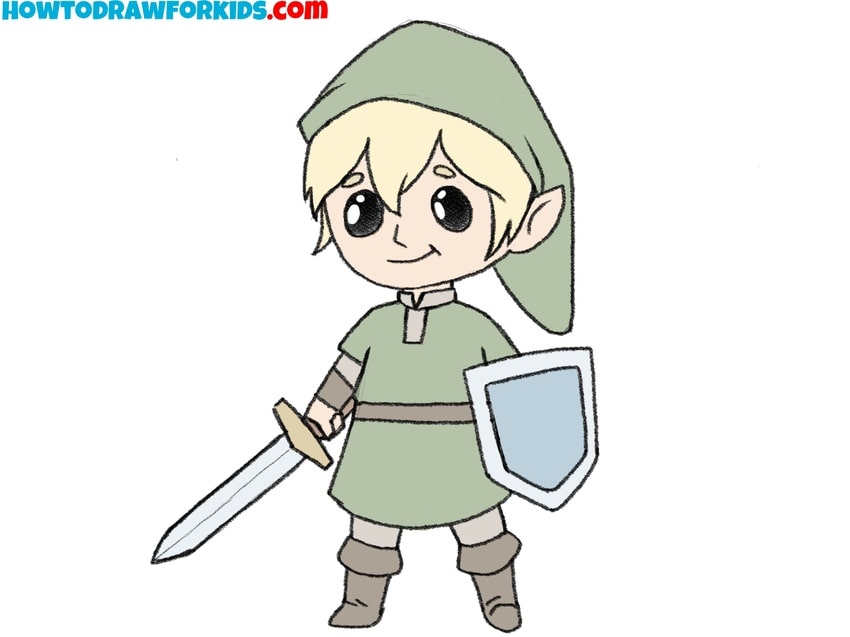How to Draw a Comic Character
Embark on a creative quest as I guide you through how to draw a comic character, starting with the beloved vigilante of Gotham in a charming chibi style. This tutorial is crafted with care to guide even the most novice hands to draw Batman, translating his powerful presence into a more whimsical, compact form.
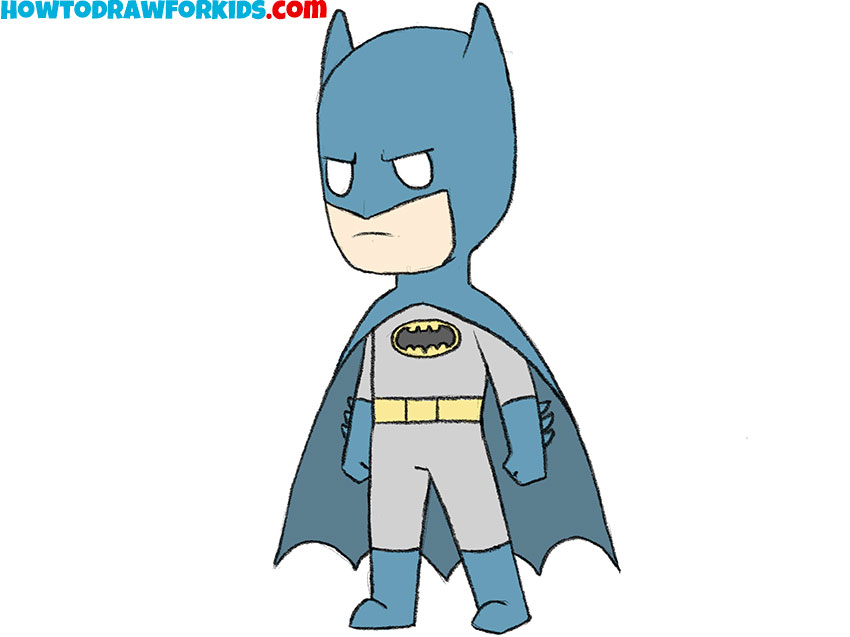
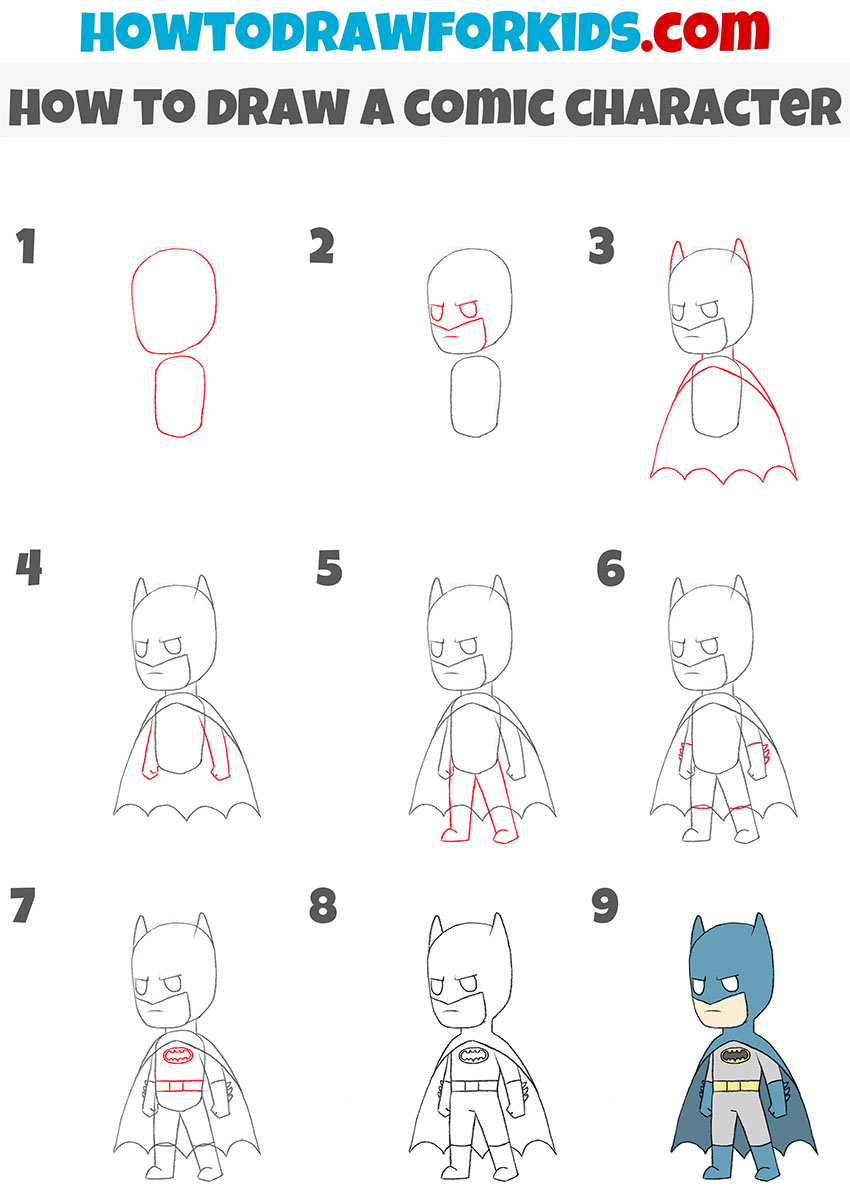
How to Draw a Comic Character: Basic Information
Join me, and together we’ll unlock the secrets of how to draw a comic character, taking inspiration from the caped crusader himself, Batman, reimagined in an endearing chibi style. This lesson distills Batman’s complex silhouette into simple shapes that anyone can master, inviting you to draw a hero that’s both mighty in spirit and charming in miniature.
Crafting this chibi Batman, we focus on exaggerating his classic features to maintain his formidable aura while still embracing the cuteness inherent in chibi art. You’ll learn to emphasize his iconic mask and cape, ensuring each aspect of his miniature form is both recognizable and full of character.
As we progress, the lines you draw will not just craft a comic character; they’ll weave a story of heroism on your page. By following this method, you’ll gain the skills to draw Batman in his charming chibi version, ready to watch over the miniature streets of Gotham from the comfort of your sketchbook.
Comic Character Drawing Tutorial
Materials
- Pencil
- Paper
- Eraser
- Coloring supplies
Time needed: 40 minutes
How to Draw a Comic Book Character
- Sketch the head and torso of the comic character.
Start by sketching the basic outlines for the character’s head and torso. Draw an oval for the head and a rounded rectangle for the torso, ensuring they’re proportionate and well-aligned.
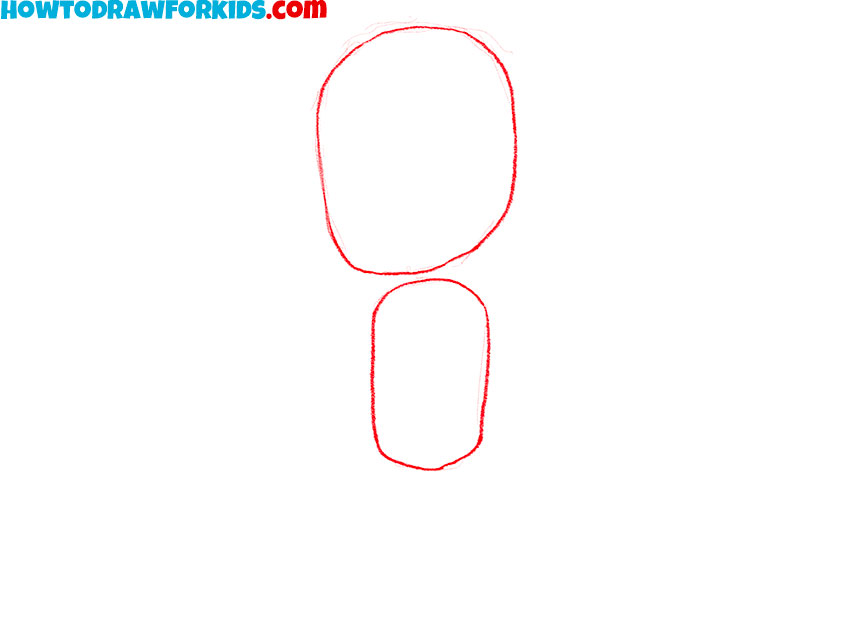
- Draw the eyes and the opening of the mask.
Sketch two slanted ovals for the eyes within the head’s oval, and add the mask’s upper edge, making sure it follows the contour of the head and accentuates the eyes’ expression.
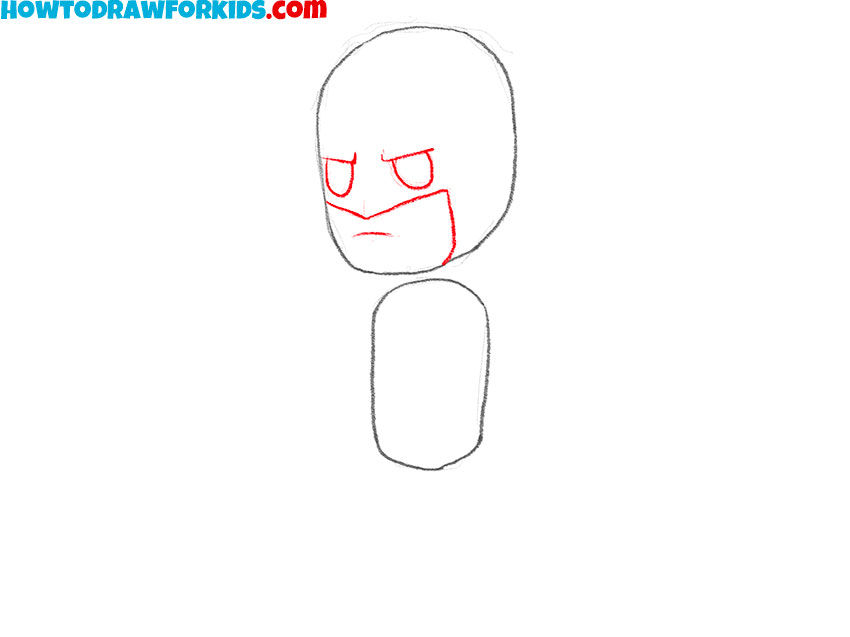
- Draw the superhero’s cape and refine the mask’s details.
Outline a flowing cape that drapes over the shoulders and down, and add the pointed ears giving your character a real super heroe’s silhouette.
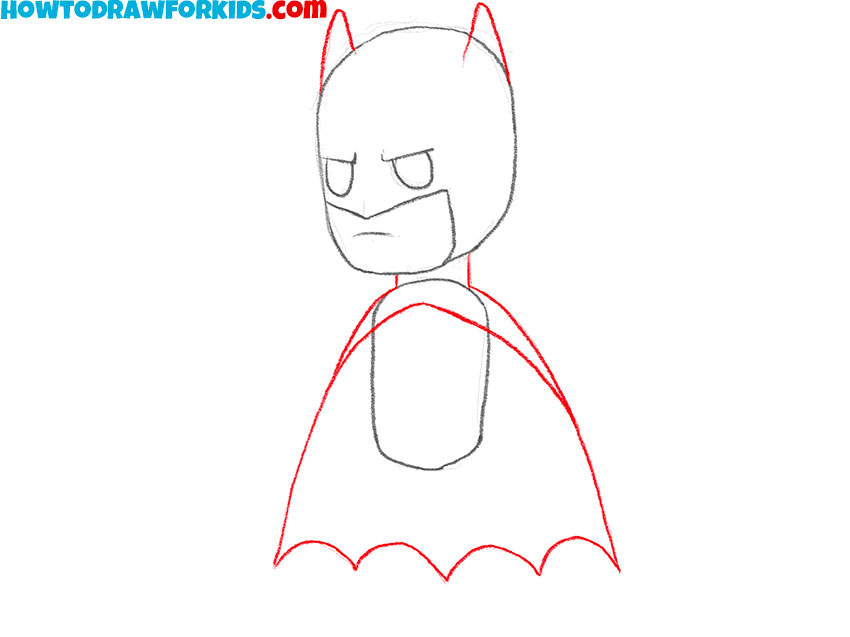
- Add the arms.
Sketch the arms, considering the character’s heroic build. In my example, the character’s hands are clenched into fists, but you can illustrate a different hand position in your comic character art.
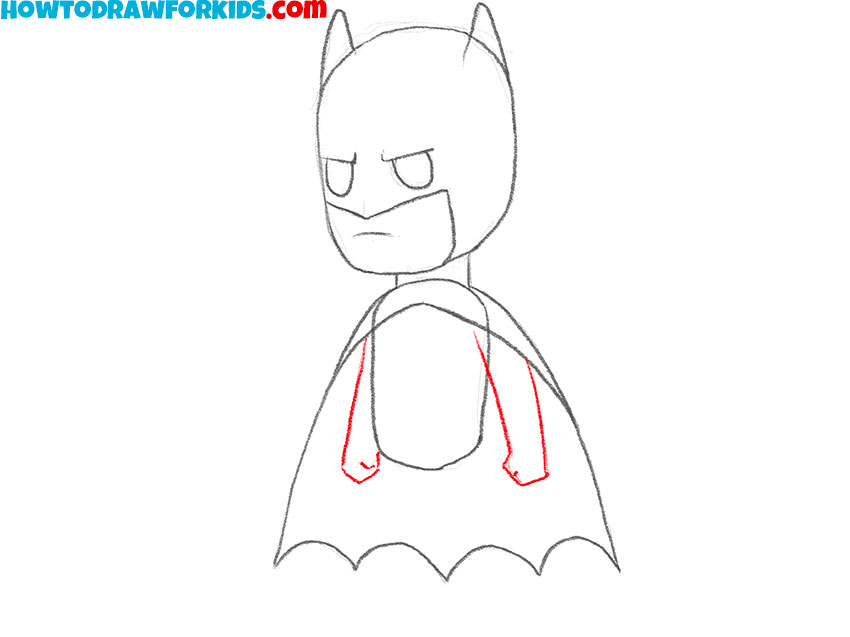
- Form the legs of the character.
Position them to give the impression of a hero who is grounded yet ready to leap into action. The legs should have a subtle bend, suggesting potential movement.
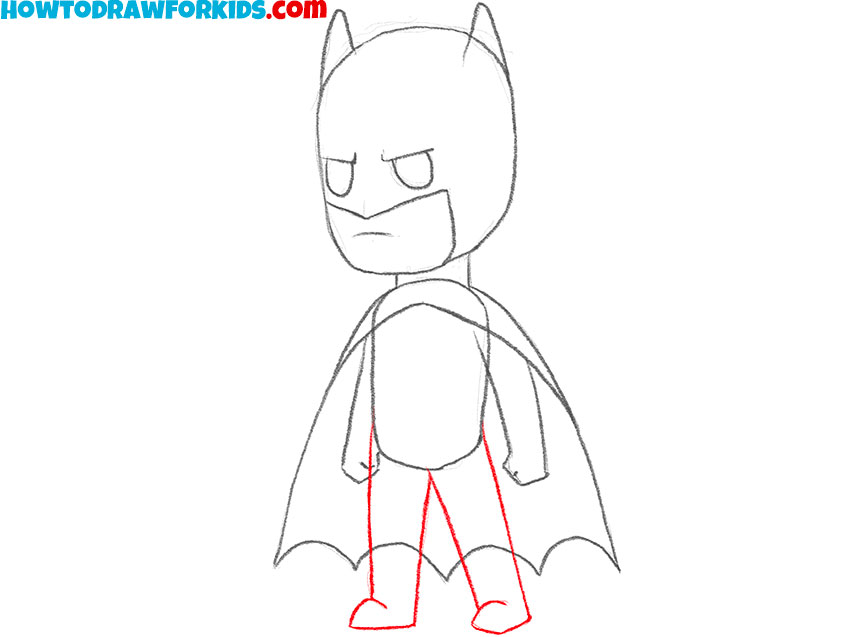
- Detail the costume of the character.
Flesh out the clothing details, highlighting the iconic gloves and boots. These should be drawn with care, as they are not just accessories but vital parts of the hero’s arsenal, crafted for combat and heroics.
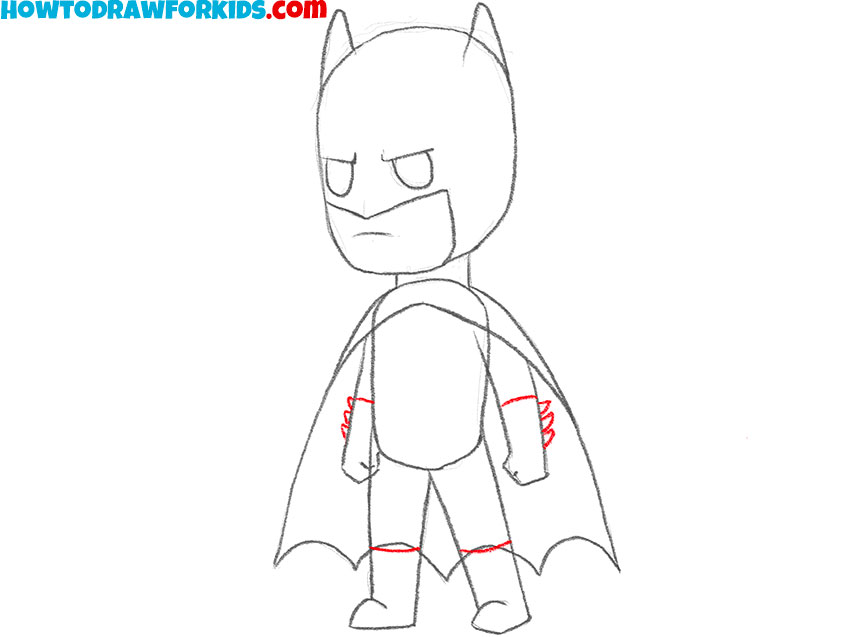
- Draw the emblem and utility belt.
The logo must be bold and central on the chest, while the belt should be utilitarian, filled with gadgets essential for a hero’s duty.
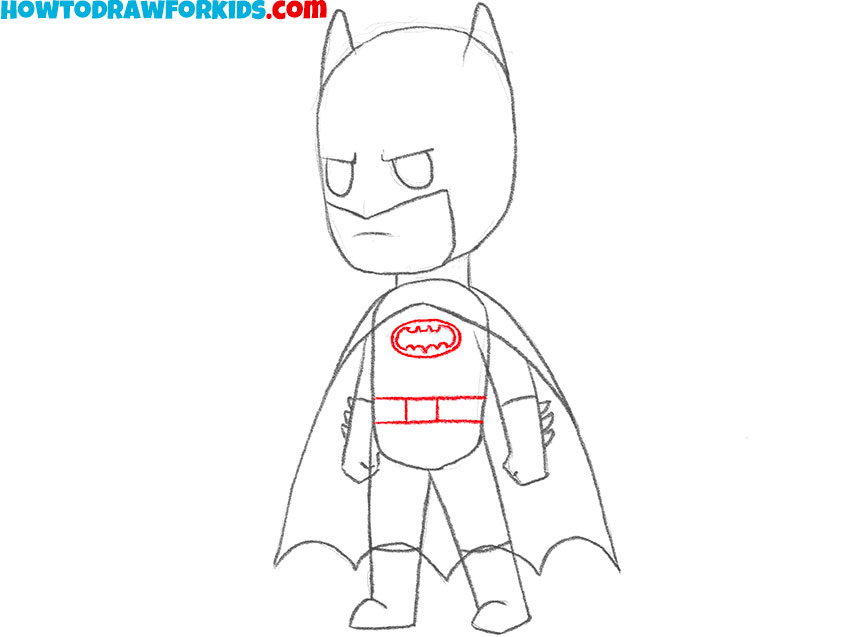
- Erase the initial sketches to clean up the drawing.
This step is like revealing the true identity of the hero, removing any unnecessary lines that hide the crisp details of the character’s figure.

- Add some colors to your comic book character.
Finish with coloration, selecting a palette that encapsulates the hero’s persona. Apply the hues with precision, ensuring they bring out the costume’s design and infuse the character with life and vigor.
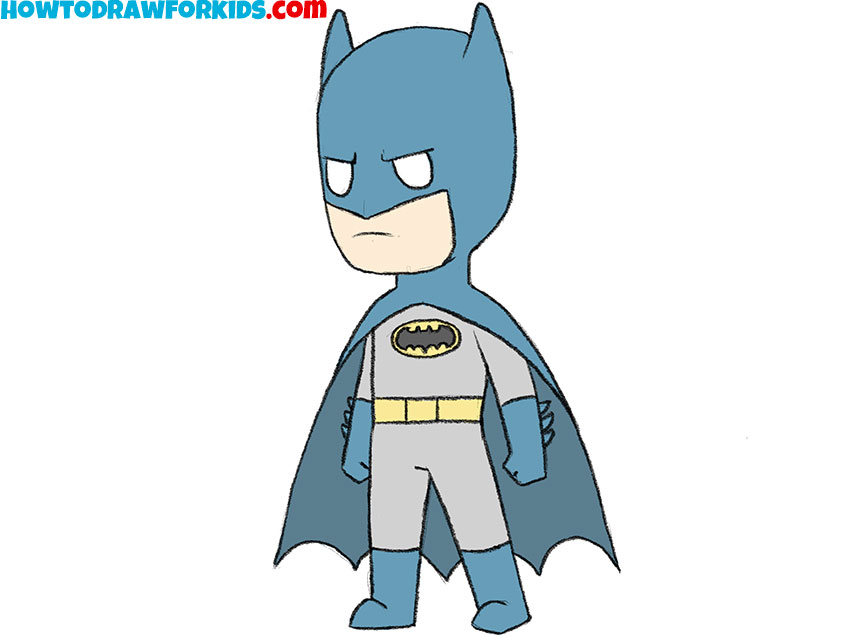
Additional Content
To enhance your journey into the world of drawing comic character, I’ve created a free PDF file specifically for this lesson on drawing chibi Batman. This file serves as a concise version of the tutorial, designed with the intention to be easily accessible and user-friendly.
This PDF guide is tailored to be both a practical and portable resource. Whether you’re at home, in a café, or even traveling, this guide ensures that you can continue to hone your art skills in any environment. It’s specifically formatted to be easy on the eyes and simple to follow, providing a stress-free learning experience.
Encouraging you to download this PDF, I aim to empower you with the tools to practice drawing at your own pace. This guide is more than just an instructional manual; it’s a bridge to unlocking your creative potential wherever you are, without the need for a constant internet connection.
Advanced Techniques for Aspiring Artists
Drawing, especially in such a stylized form as chibi, offers a unique blend of challenges and joys. To further enhance your abilities and enjoyment in this art form, here are some carefully curated tips and tricks that will serve as your guideposts for continued growth.
- Emphasize Expressions: Chibi characters are all about expressions. Exaggerate facial features to convey emotion more effectively, making your characters come alive.
- Practice Line Weight Variation: Experiment with the thickness of your lines; thicker lines can define the outer edges of your character, while thinner lines work well for inner details.
- Explore Different Poses: To add dynamism to your characters, practice drawing them in a variety of poses. This not only improves your skill but also breathes life into your creations.
- Use References: Don’t hesitate to use reference images, especially when you’re learning. They can provide valuable insights into anatomy, posing, and expression.
These tips and tricks are not just techniques to be mastered but stepping stones on a path to discovering your unique artistic voice. As you continue to explore and experiment, let each stroke of your pencil be a testament to your growing passion and proficiency in the enchanting realm of chibi art.
Building Your Miniature Universe
As we close this chapter on creating chibi characters, let’s consider the vast landscape of possibilities that lies ahead. Here are some specific steps you can take to expand your skills and enrich your artistic repertoire, each accompanied by a concrete example to guide your exploration.
- Expand Your Cast: Draw companions or adversaries for your chibi character. For instance, if you’ve drawn chibi Batman, why not add a chibi Joker or Robin into the mix? This will not only add to your narrative but also offer practice in varying expressions and dynamics.
- Create Dynamic Scenes: Place your character in an engaging background. Imagine chibi Batman patrolling a miniature Gotham City at night, complete with tiny skyscrapers and the Bat-Signal lighting up the sky. This practice helps in understanding perspective and environmental design.
- Dabble in Color Theory: Apply colors to bring out mood and character traits. Give your chibi character a palette that reflects his dark, brooding nature with shades of black, gray, and touches of gold for his utility belt. Color choice can dramatically affect the viewer’s perception of your character.
By diving into these activities, you embark on a path filled with endless learning and creativity. Each new character or scene you tackle broadens your artistic scope, deepening your understanding and appreciation of the art form.
Conclusion
Our artistic exploration doesn’t stop with Batman. I encourage you to visit my site for a treasure trove of lessons on a variety of subjects, from the gentle curves of a golden retriever to the detailed shading of Kakashi. Each guide is designed to challenge and inspire you, pushing your artistic boundaries further.
Stay connected and never miss an update by following me on social media. Your participation and suggestions are what shape this community, making every lesson more enriching. Share your thoughts and desires for new drawing challenges beneath this lesson. Together, we’ll continue to make art that astonishes and delights.




